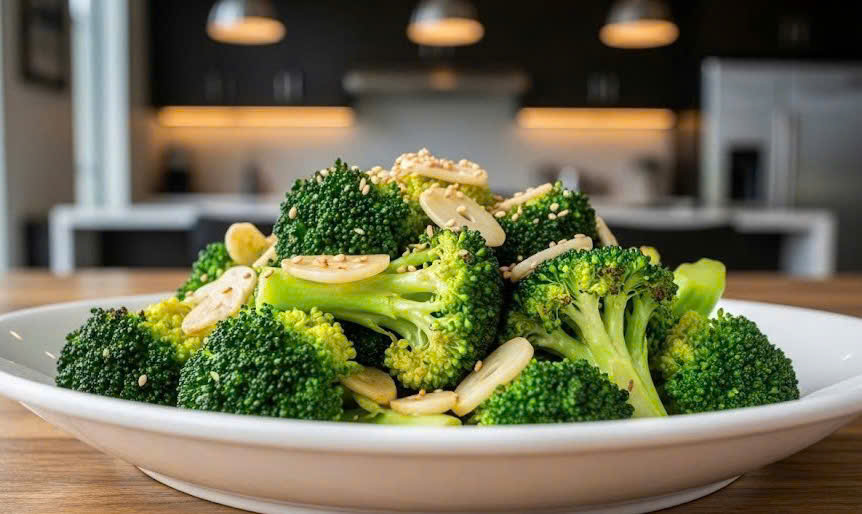Fatty liver disease occurs when fat accumulates in the liver, exceeding 5% of its weight. If left unchecked, it can progress to hepatitis and cirrhosis. Doctor Nguyen Anh Duy Tung, a specialist in Dietary Therapy at Tam Anh General Clinic, District 7, advises that in addition to limiting alcohol, sugary drinks, and greasy foods, patients should incorporate vegetables rich in antioxidants, vitamins, and fiber to support liver detoxification.
Broccoli contains sulforaphane and numerous antioxidants that help reduce fat accumulation in the liver. Eating it 2-3 times a week, boiled, steamed, or lightly stir-fried, helps preserve its nutrients.
Spinach, rich in lutein and vitamin E, limits liver cell damage caused by oxidative stress. Its natural nitrates also help regulate blood pressure and blood lipids – important factors for those with fatty liver disease.
Pumpkin is low in calories and high in water and fiber, which helps cleanse the body, acts as a diuretic, and reduces the burden on the liver. Patients can make pumpkin soup or drink boiled pumpkin water as a substitute for sugary drinks.
 |
Broccoli, rich in antioxidants, helps reduce fat accumulation in the liver. Photo: Trong Nghia |
Carrots contain beta-carotene, which converts to vitamin A, boosting immunity and improving liver function. They are also rich in fiber, helping control cholesterol and support weight loss.
Cucumber is cooling, diuretic, and rich in vitamin C and antioxidants. Adding cucumber to daily meals, in salads or juices, can help cool the body and support efficient liver function.
Doctor Duy Tung recommends that people with fatty liver disease consume plenty of fresh fruits and vegetables and adopt a healthy lifestyle, including at least 30 minutes of daily exercise. Supplementing with natural active ingredients like wasabia japonica and s.marianum supports digestion, enhances metabolism and liver cell activity, contributing to the prevention of fatty liver disease.
Patients should consult gastroenterology and nutrition specialists to monitor liver function and blood lipid levels. This allows doctors to comprehensively assess their condition and advise on appropriate treatment plans, diets, and exercise regimens for each stage of the disease.
Trong Nghia
| Readers can submit their nutrition questions here for doctors to answer. |












